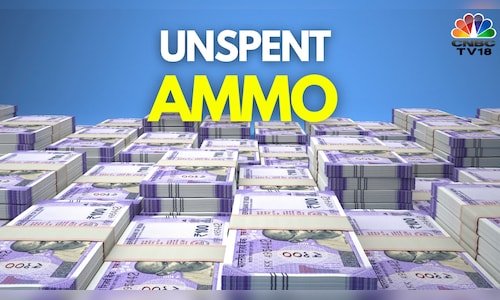Government capex like the money spent on building affordable housing, roads, bridges, and other critical infrastructure, typically, has a domino effect helping other parts of the economy. To put in perspective, the union government’s entire capex budget for the financial year ending March 2025 is ₹10.1 lakh crore. So, an amount nearly 28% of that is lying unspent at the level of state governments. If this money is released in the coming months, it could act as a much-needed booster for India’s sluggish economy.
According to the Emkay report dated March 18, at least five Indian states have more than half of their capex budget unspent. While Maharashtra, which witnessed elections in late 2024, led the list with 59% of planned capex unspent, even a state like Bihar, where elections are due this year, did not see the promised money flow into development projects.
| State | Unspent capex at the end of Jan/Feb 2025 |
| Maharashtra | 59% |
| Bihar | 58% |
| Andhra Pradesh | 55% |
| Uttar Pradesh | 52% |
| West Bengal | 52% |
The union government in New Delhi had set aside ₹1.1 lakh crore to be lent interest-free (for 50 years) to state governments during the financial year ending March 2025. However, at the end of January, only ₹29,850 crore (27%) of those loans were taken. One of the reasons why states have been reluctant to spend the money is the high levels of debt and fiscal deficit.
Read more: Top 10 Indian states with the highest fiscal deficit
However, contrary to conventional wisdom, while they have spent 4% less than the capex budget, there is an increase in revenue expenses like subsidies, salaries, and pensions. It is important to note that even the revenue expenses, while still rising, have been significantly lower than budgeted.
Some states have been complaining about operational issues with the central government assistance. Earlier, the money would directly move from the Reserve Bank of India (RBI) to the accounts of the state government exchequer. However, with the advent of SNA-SPARSH, a new system of disbursement introduced in Jan 2024, the money goes into a single nodal account (SNA) controlled by the RBI. The new system was aimed at curbing idling of borrowed money and led to a saving of ₹26,000 crore in interest costs, according to Finance Minister Nirmala Sitharaman,
There are some strict conditions to get money via the SNA-SPARSH system. For instance, central government assistance can’t be availed unless 75% of the funds released earlier aren’t utilised. The latest union budget showed that 62% of the money released to states for centrally-sponsored schemes wasn’t spent.
The money coming from New Delhi for centrally-sponsored schemes (like the ones for rural roads, water supply, and affordable housing) must also be spent entirely for fresh loans (interest-free) from the union government. The unspent capex has, therefore, started another vicious cycle.
The interest earned on the idle money, which are lying in the single nodal agency (SNA) account, will be transferred back to the central exchequer at the end of March 2025.
While state governments tend to spend a big chunk of their budgets in the month of March, the backlog is too big to be exhausted in a month or two. State governments will likely carry a sizeable chunk of cash into the new financial year starting in April instead of waiting for fresh approvals from the centre or RBI.
India’s gross domestic product grew 6.2% between October and December 2024. It was much better than the seven-quarter low hit three months earlier but still slower than the economic growth rate at the end 2023. Releasing the idle cash may be the big booster shot the world’s fastest growing major economy needs.
